Lack of trees exacerbates extreme heat effects in Australian suburbs
Two-thirds of Australian urban areas are losing a vital resource that could make our cities not just unbearable but almost unliveable in years to come.
EXCLUSIVE
Huge swathes of our suburbs are in danger of becoming virtually unliveable with residents jumping from “aircon to aircon via a car with aircon” to avoid the searing heat.
That’s one of the conclusions of a new report that has also found that in just seven years the number of trees in 69 per cent of urban areas has dramatically dropped. Without enough trees shading city streets, temperatures can be as much as 10C hotter.
And one of the biggest culprits of cranking up the heat in our suburbs is homeowners clearing trees to build, among other things, swimming pools – ironically to cool down on hot days.
Associate Professor Joe Hurley from RMIT’s Centre for Urban Research said city greenery not only helped put the lid on heat, it was also key in managing stormwater and provided physical and mental health benefits.
“Green cover should be managed as critical infrastructure alongside communications, transport, water and the electricity network,” he told news.com.au.
“But all too often trees are traded away for other demands like urban development. It can end up being about having tree or something else when we should manage our cities better so we can have green cities.”
RELATED: The huge weather change coming this summer – La Nina declared

GREENEST SUBURBS VS GREYEST SUBURBS
Prof Hurley is the lead author of Where Will all the Trees be, a new report released today by RMIT and Greener Spaces Better Places, a government, academia and horticulture industry initiative that looks at the benefits of greening cities, which examined tree cover across hundreds of Australian local government areas (LGAs).
It found Cairns had the most green cover at 83 per cent while Wyndham, in Melbourne’s south west which includes Werribee, had the least at just 5.4 per cent.
Yarra Ranges in Victoria, Sydney’s Hornsby and Sutherland shires and Kingborough Council in Tasmania were also at the top of the leaderboard.
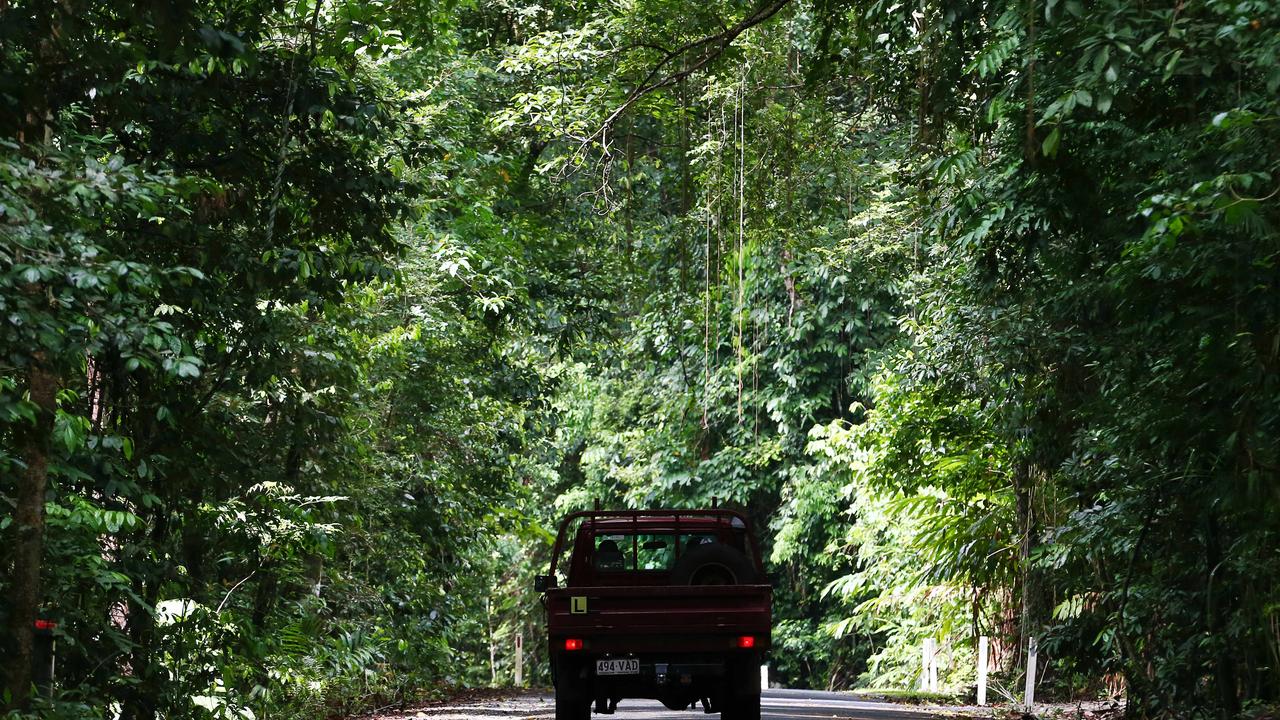
At the other end, jostling for space as the least greenest LGAs with Wyndham are Melton, Maribyrnong, Hobsons Bay and Hume – all in or close to Melbourne – and Port Adelaide Enfield in South Australia. The least green areas of Sydney are Bayside, the LGA around Botany Bay, as well as Cumberland, Camden and Fairfield in the city’s west.
The report has a feature that allows residents to type in their postcode and see how tree cover is faring in their area.
The authors acknowledge Cairns, with large tracts of rainforest within its borders, and Wyndham, with grassland and industrial areas, are not easily comparable.
As such, it divides urban areas into six types depending on population density and climate. Even by this comparison, Wyndham has far less tree cover than, say, Bendigo which has similar rainfall and density.
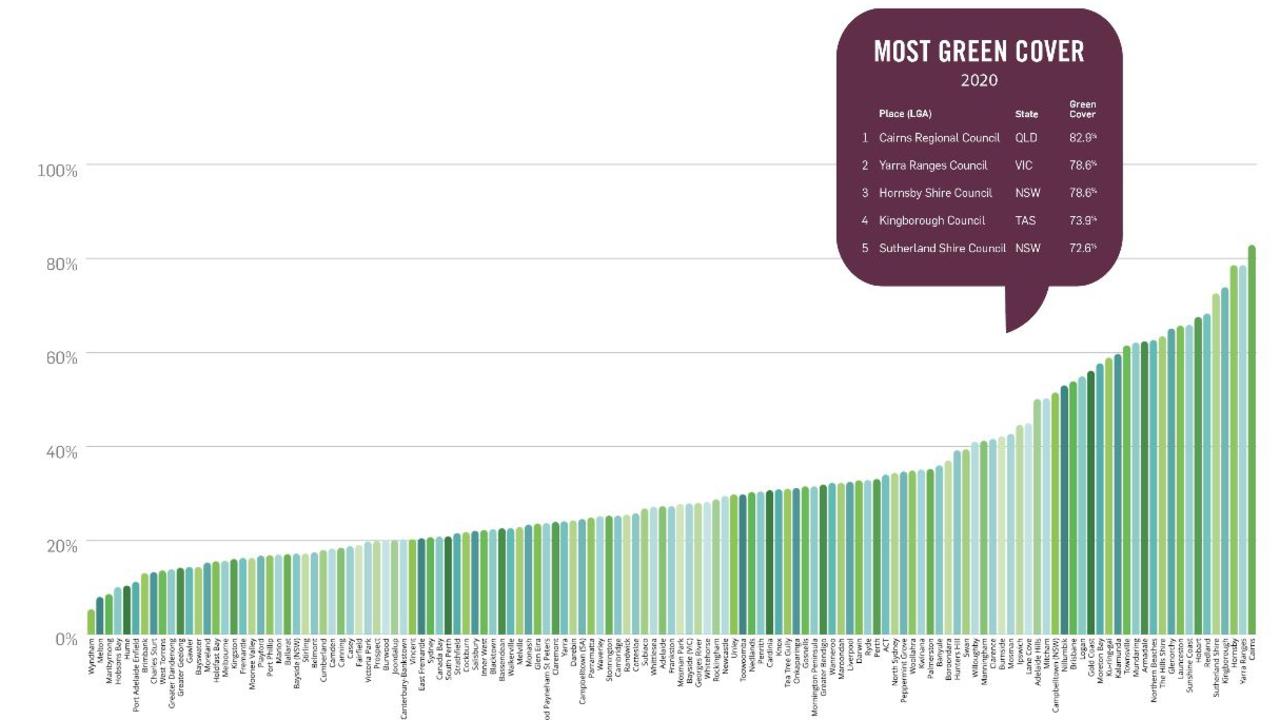
Overall Launceston, the Sunshine Coast and the Sutherland Shire have seen the biggest growth in trees, approaching 10 per cent more in four years.
Conversely, Palmerston in the Northern Territory, Ryde and Burwood in Sydney and Kalamunda in Perth have seen the biggest reduction.
“The bad news is between 2013 and 2020 the majority of LGAs have lost green cover. The more encouraging news is that from 2016, the majority are now gaining cover, that’s a good sign that the longer term trend is being turned around – but they still haven’t made up the losses,” said Prof Hurley.
A slew of councils have been judged as being at very high risk of losing more of their canopy, including Blacktown and Burwood in Sydney; Darwin; Bayswater and Fremantle in Perth; Melbourne’s Brimbank council and Ipswich in Brisbane. In the big cities, the greenest areas are often those closest to the CBD with many of those also now the most expensive to live.

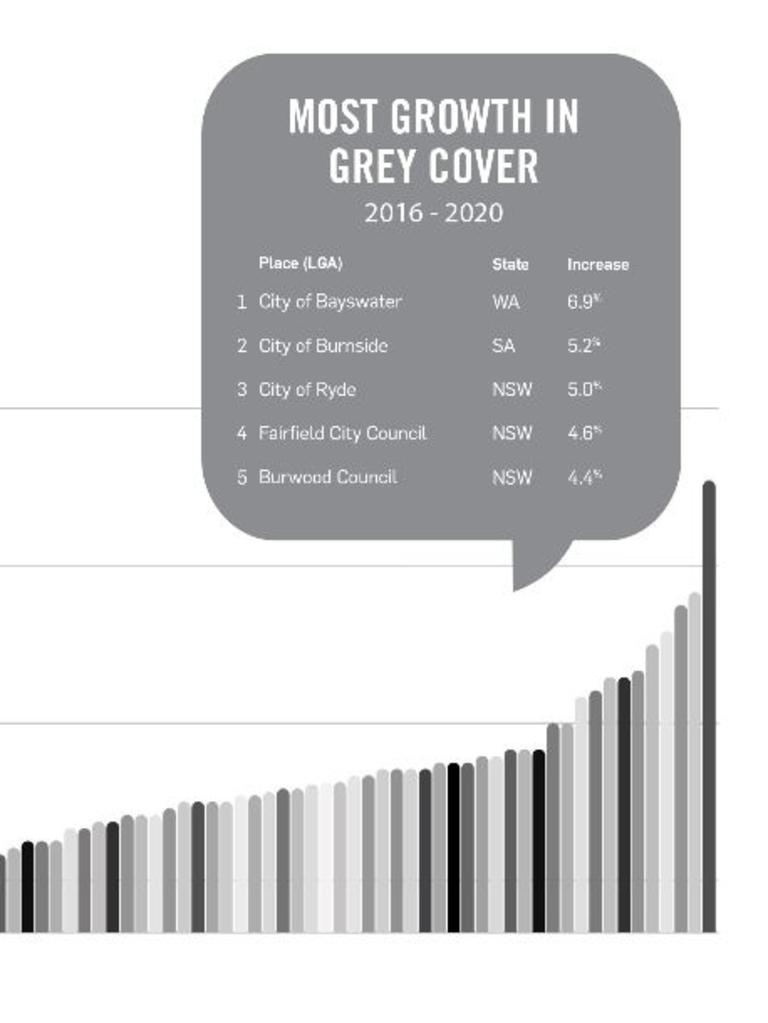
NEW DEVELOPMENTS AND SWIMMING POOLS
More intense developments in inner suburban areas were responsible for tree loss. On brownfield sites and on the urban fringe, new suburbs were too often being built with houses crammed in and little thought given to greenery.
Councils are getting better at mandating green cover but about half of all urban vegetation was on private land and this was harder to control, Prof Hurley said.
“Trees are vulnerable through development; a drying climate may claim a tree which is then taken out or a healthy one replaced by a homeowner for a trampoline or swimming pool. They’re not bad reasons but the cumulative effect is a diminished number of trees.”
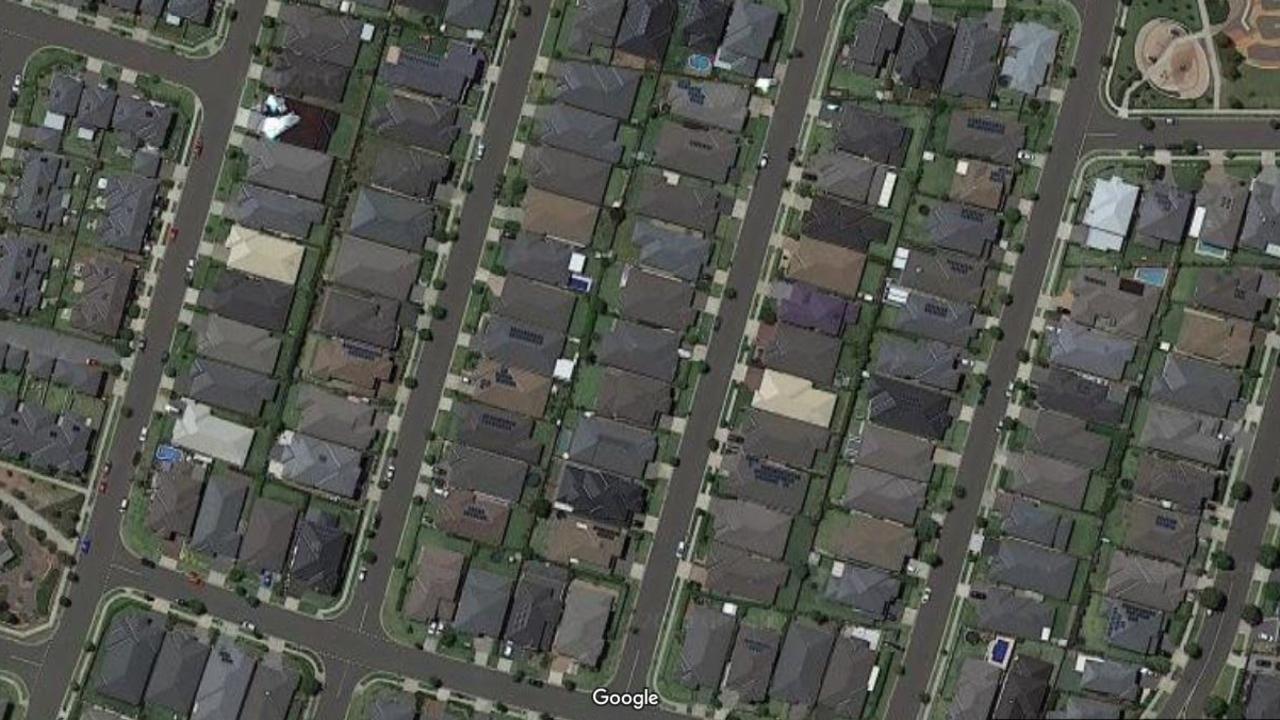
EXTREME URBAN HEAT
Other studies have shown trees can have a dramatic effect on the ambient temperature of cities. Urban areas are often hotter than surrounding country areas anyway due to “grey cover”, the preponderance of hard surfaces like asphalt and metal roofs that help crank up the mercury. Lack of canopy can make this issue worse.
A vivid example from Melbourne illustrates this. Thermal images of Royal Parade show the surface temperature of the road fully exposed to the sun as surpassing 65C; yet just meters away a tree shaded area is around 30C cooler.
The air temperature of urban areas with more trees can be around 4C cooler than those without. On a more local level, the air temperature in an treeless car park can be 10C higher than a nearby shady street.
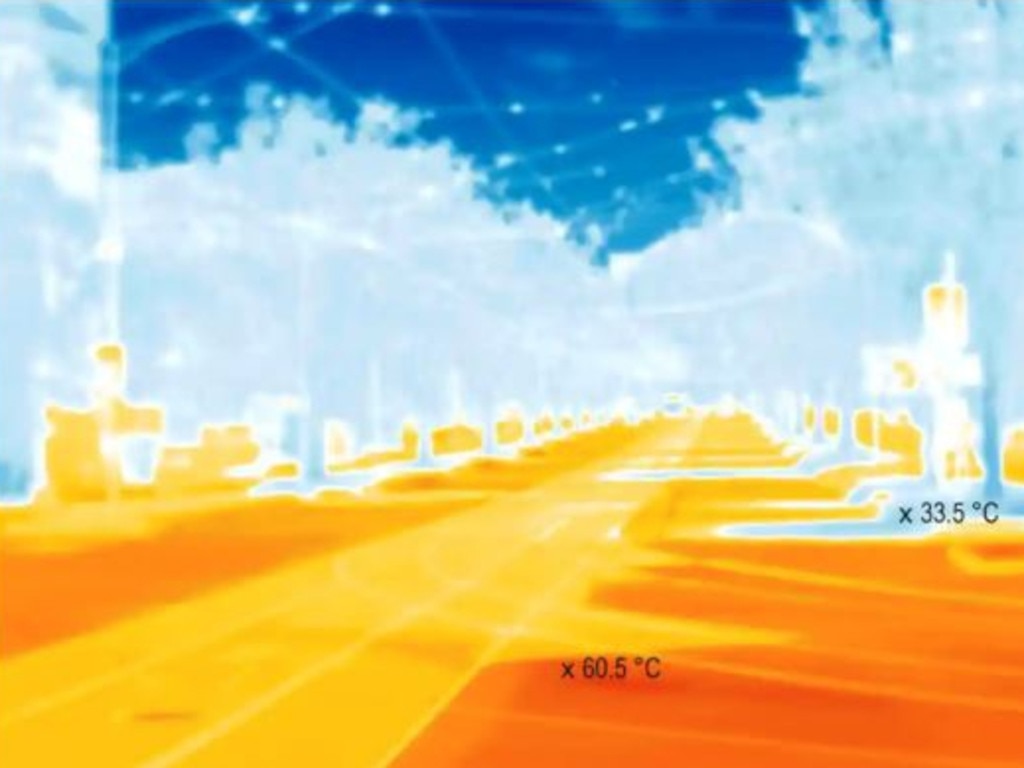
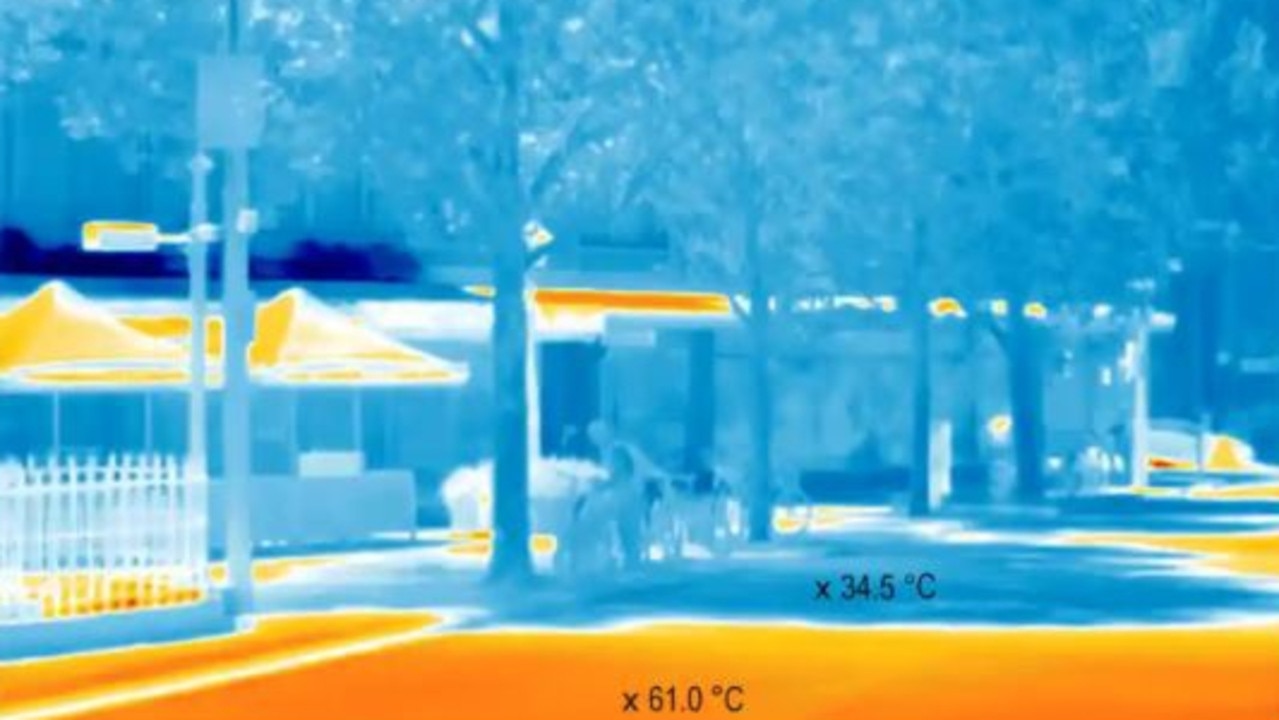
In 2017, a stark warning was given that rising heat and humidity in Darwin could make the city “unliveable”. Since then, the city council has begun greening the CBD to bring the mercury down.
Heatwaves kill more Australians than any other natural event with people over 65 at a far higher risk of death as days hot up, while extreme heat already contributes to 1000 deaths a year in that age group. Violence and substance abuse also goes up.
Inland suburbs of major Australian cities are already far hotter in summer than their seaside equivalents.
A report by the Western Sydney Regional Organisation of Councils found in that on the hottest day in 2017, Penrith, in the city’s west, reached 47C; the CBD’s hottest day that year was a cool 39.4C by comparison. In 2017, there were zero days above 40C in the CBD but eight in the western suburbs.
Urban forests could make all the difference between making these scorching suburbs liveable and unliveable, said Prof Hurley.
“A key element of liveability is a healthy lifestyle. If you’re not able to walk to local schools or parks because it’s hot, that has significant cumulative effect on your health.
“If there is little (cooling) vegetation, there is a disincentive to walk. You go from aircon to aircon via a car with aircon and that’s not good for your health or the environment.”
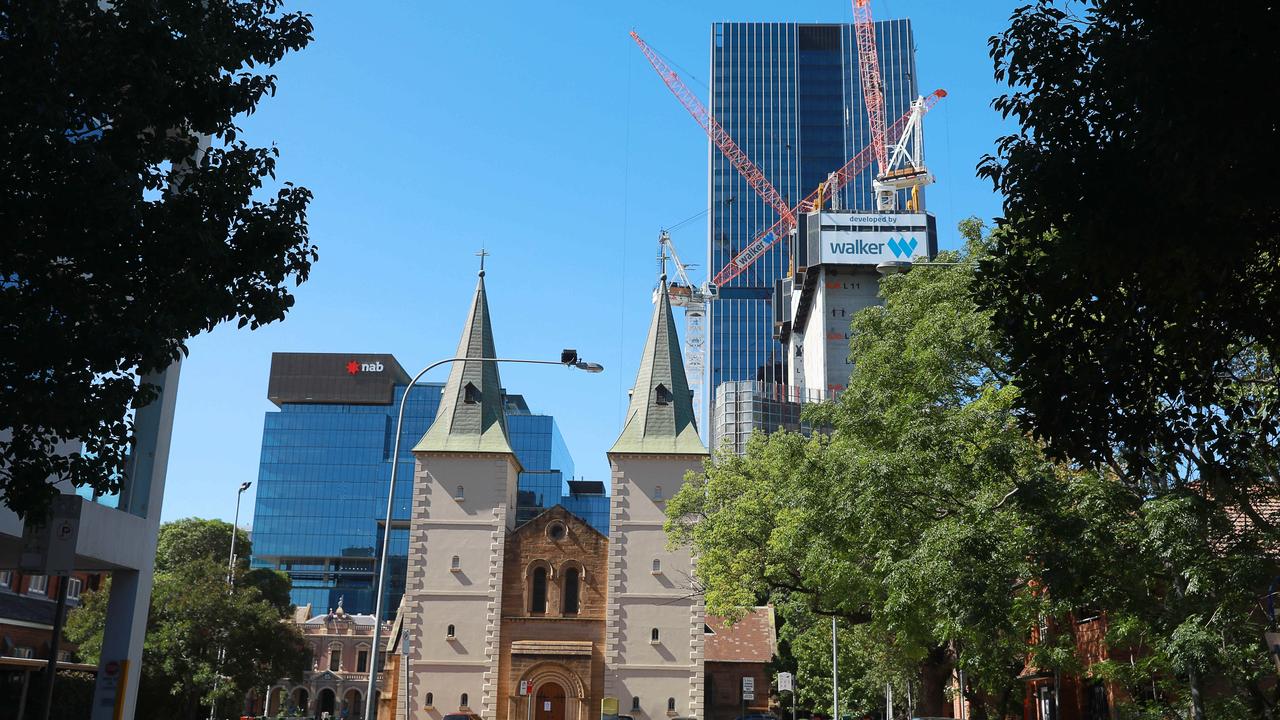
A standout council was Parramatta in Sydney’s east, stated the report. Its grey cover has risen because of new developments, but so has its green cover with half a million trees planted in the last five years.
“We can’t say ‘stop developing and just plant trees’ so what’s exciting about Parramatta is how it is increasing urban tree canopy to create better neighbourhoods while becoming a major urban centre,” said Prof Hurley.
“The answer is to prioritise green infrastructure alongside development. As cities grow, we can make them greener – it’s not an either, or.”




